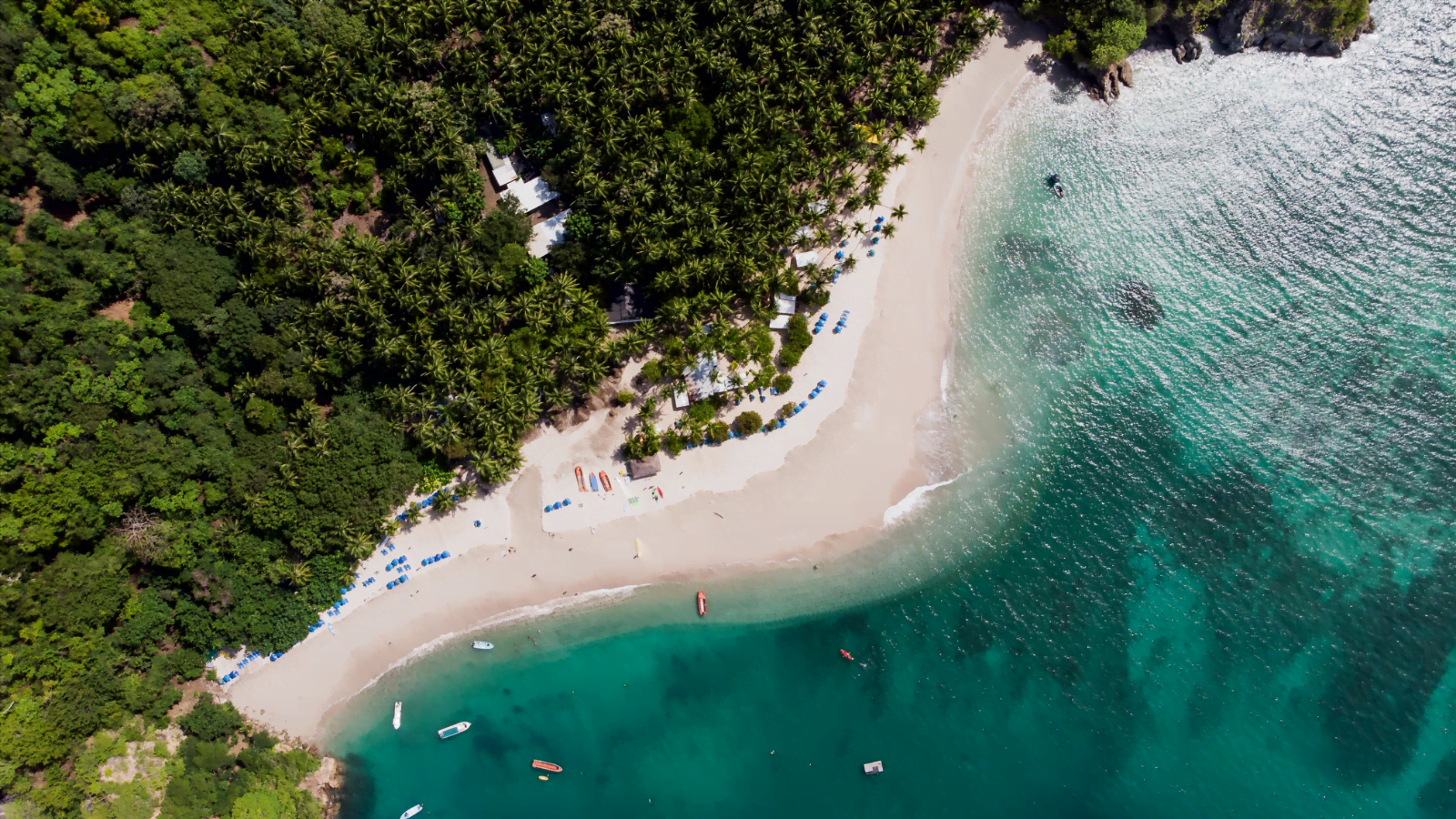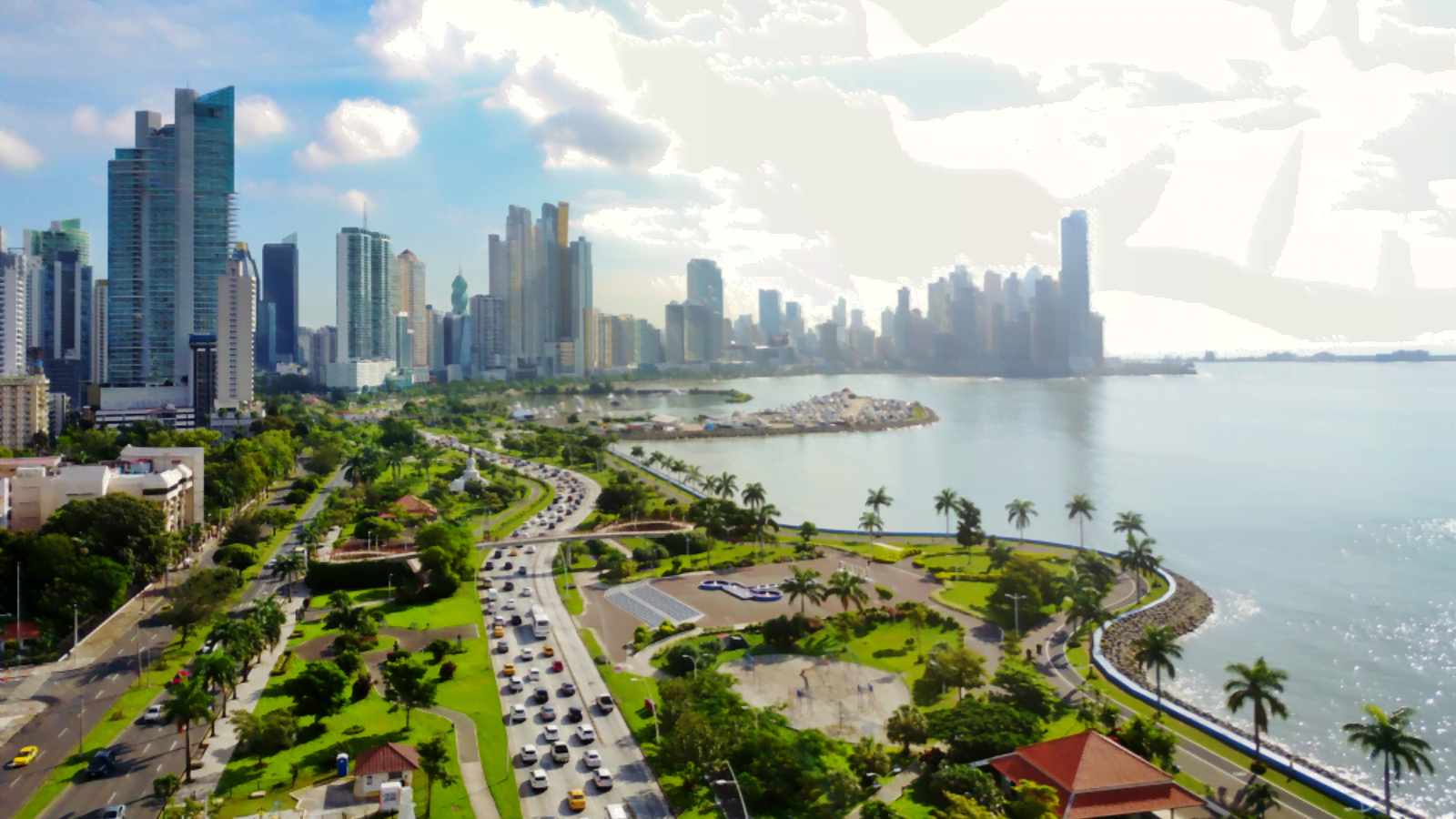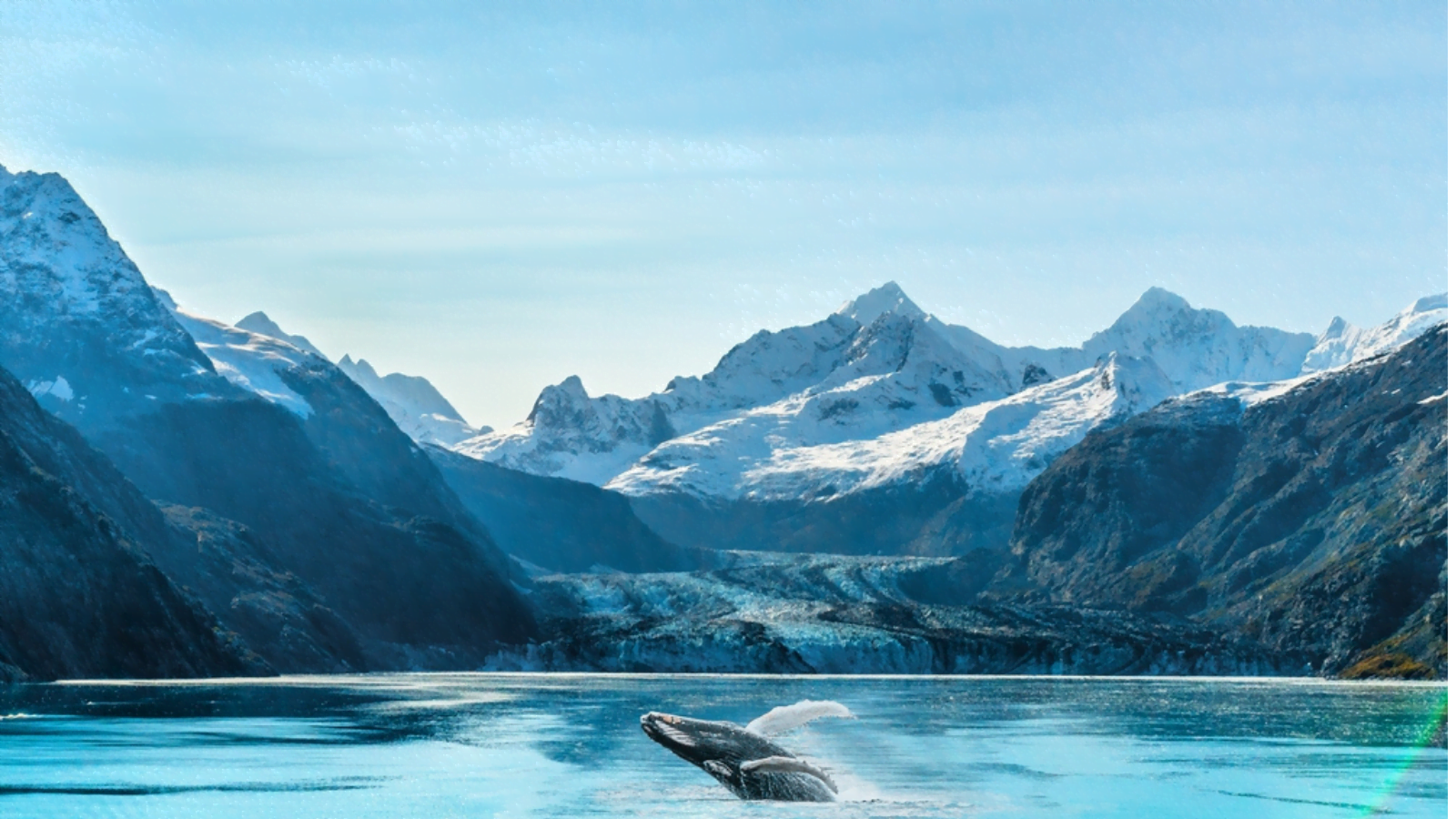Join 34,000+ Traders & Investors by getting our FREE weekly Sunday Cheat Sheet email. Get key market news and events before everyone else. Click Here to See if you Qualify.
In an age of accelerating climate change, the sun’s radiative force has emerged as a potent factor impacting Earth’s delicate balance. Solar radiation, a fundamental source of energy for life on our planet, is undergoing significant changes due to various human activities and natural processes.
The consequences of these shifts are far-reaching, affecting ecosystems, weather patterns, and human health. This article sheds light on 12 locations around the world that are particularly vulnerable to the increasing solar radiation, exploring the unique details of each area’s susceptibility.
Arctic Region
Rising Danger: 12 Spots Where Escalating Solar Radiation Could Spell Disaster!
- Arctic Region
- Antarctica Peninsula
- Sahara Desert
- Gobi Desert
- Bangladesh Delta
- Australian Outback
- Amazon Rainforest
- South Asian Urban Centres
- Middle East’s Oasis Cities
- Andean Glaciers
- Low-Lying Pacific Islands
- African Savannas
- Conclusion
- Profitable Stock Traders are Using This Tool to “Hack” the Markets
- 10 Industries That Will Make The Most Millionaires In The Next 5 Years
- 8 Cryptos Set to Shoot to the Moon in 2023 – One Small Investment, One Giant Leap for Your Wallet
- 10 Stocks in Bill Gates Stock Portfolio Smart Investors are Buying
- The 27 Unexpected Habits Of The Wealthy: Secrets To Maximize Your Money
- Top 6 Personality Traits Of Highly Successful Investors And Traders

The Arctic Region, characterized by its expansive ice cover, is undergoing a profound transformation due to rising solar radiation. The retreat of sea ice, driven by global warming, reduces the region’s albedo effect – the ice’s ability to reflect sunlight – thereby exposing darker ocean surfaces.
These exposed waters absorb more heat, leading to a feedback loop of warming. The resultant loss of habitat threatens iconic Arctic species like polar bears and seals while also contributing to global sea level rise.
The Arctic’s increased vulnerability to solar radiation underscores the urgent need for international climate action to preserve this delicate ecosystem and mitigate its far-reaching impacts.
Antarctica Peninsula

The Antarctica Peninsula, an expanse of ice jutting into the Southern Ocean, faces escalating solar radiation impacts. As temperatures rise due to climate change, ice sheets and glaciers are melting, revealing darker land and ice underneath.
This unveils surfaces with reduced albedo, causing them to absorb more solar energy and exacerbating regional warming. The accelerated ice loss contributes to rising sea levels, affecting global coastlines and ecosystems.
Scientific research stations, critical for climate study, also confront greater vulnerability. Urgent global efforts are required to monitor and mitigate the solar radiation increase on the Antarctica Peninsula, safeguarding its unique environment and global implications.
Sahara Desert

The world’s largest and hottest desert, the Sahara, is becoming even hotter due to a combination of factors such as deforestation, urbanization, and land degradation. The Sahara Desert, already an arid expanse, faces escalating vulnerability from intensifying solar radiation.
Human activities like deforestation and urbanization disrupt the desert’s natural temperature regulation mechanisms. Reduced vegetation cover and soil degradation diminish the area’s ability to absorb and dissipate excess heat, amplifying the solar radiation’s impact. The resulting temperature rise contributes to desertification, affecting local ecosystems and communities.
Sand and dust particles suspended in the atmosphere further exacerbate solar radiation absorption. Sustainable land management and reforestation efforts are crucial to mitigate the Sahara’s increasing susceptibility, preserve biodiversity, and alleviate the broader consequences of heightened solar radiation in the region.
Gobi Desert

The Gobi Desert, spanning vast expanses of Asia, is grappling with heightened vulnerability to solar radiation increase. A combination of factors, including expanding aridness and land degradation, accentuate its susceptibility.
With the advancing desertification process, an increase in suspended dust and sand particles intensifies the absorption of solar energy. This phenomenon not only accelerates local temperature rise but also affects neighbouring regions. The Gobi’s unique ecosystem, adapted to extreme conditions, faces disruption as solar radiation amplifies. International collaboration on desertification control and sustainable land use is crucial to the Gobi Desert
Bangladesh Delta

The Bangladesh Delta, a low-lying region crisscrossed by rivers, is confronting heightened vulnerability to increasing solar radiation. Rising sea levels and deforestation amplify its susceptibility. As saline water intrusion expands due to sea level rise, fertile land becomes less productive and vulnerable to increased solar radiation.
Reduced vegetation cover and higher temperatures escalate heat absorption, raising the risk of heat-related illnesses. The delta’s unique biodiversity and communities are at stake as solar radiation exacerbates existing challenges. Urgent measures, including mangrove restoration and adaptive strategies, are essential to safeguard the Bangladesh Delta from the intensifying impact of solar radiation.
Australian Outback

The Australian Outback, a vast arid region, confronts escalating vulnerability from amplified solar radiation. With sparse vegetation cover and dry soils, the Outback struggles to regulate rising temperatures. Prolonged heatwaves, fueled by increased solar energy absorption, heighten the risk of wildfires and endanger native flora and fauna.
The delicate balance of this unique ecosystem is disrupted as solar radiation intensifies, affecting both local communities and biodiversity. Adequate fire management strategies, reforestation efforts, and sustainable land practices are crucial to mitigate the growing impact of solar radiation in the Australian Outback, preserving its ecological integrity and mitigating potential disasters.
Amazon Rainforest

The Amazon Rainforest, often referred to as the “lungs of the Earth,” is facing escalating vulnerability from amplified solar radiation. Deforestation and land degradation compromise the region’s natural ability to regulate temperature. As trees are cleared, the forest’s cooling mechanism weakens, resulting in increased solar energy absorption.
This heightens the risk of droughts and heatwaves, impacting both local ecosystems and global weather patterns. The Amazon’s unique biodiversity and carbon sequestration role are at stake as solar radiation intensifies. Urgent efforts to combat deforestation, coupled with sustainable land use practices, are imperative to safeguard the Amazon Rainforest from the growing threat of solar radiation increase.
South Asian Urban Centres

South Asian urban centres, burgeoning with rapid urbanization, confront heightened vulnerability to increasing solar radiation. The proliferation of concrete and asphalt surfaces creates urban heat islands, where sunlight is absorbed and trapped, and raising local temperatures. Air pollution exacerbates this effect, further intensifying solar energy absorption.
Cities like Delhi, Mumbai, and Karachi witness rising heat-related illnesses and energy demands. The delicate balance between urban development and environmental well-being is strained as solar radiation amplifies. Urgent measures such as green infrastructure, efficient urban planning, and emission reduction are crucial to mitigate the impact of solar radiation in South Asian urban centres, ensuring livable and sustainable cities.
Middle East’s Oasis Cities

The Middle East’s oasis cities, exemplified by Dubai and Riyadh, grapple with increasing vulnerability to solar radiation. Rapid urban expansion and infrastructural development expose these regions to higher solar energy absorption. While green spaces and water features provide some relief, they are water-intensive and challenge the already scarce resources.
The delicate balance between urban modernization and sustainable practices is at risk as solar radiation intensifies. Strategic urban planning, sustainable landscaping, and innovative cooling technologies are essential to mitigate the growing impact of solar radiation in oasis cities. Preserving their unique cultural heritage and ensuring resilience are paramount.
Andean Glaciers

The Andean glaciers, vital freshwater sources for the region, face heightened vulnerability due to increasing solar radiation. As temperatures rise, the glaciers melt at an accelerated pace, revealing darker rock surfaces beneath. These exposed areas absorb more solar energy, exacerbating the glacial retreat. The consequences extend beyond local water supply disruptions, impacting agriculture and hydropower.
The delicate balance of Andean ecosystems and communities is threatened as solar radiation intensifies. Swift international action, including climate adaptation strategies and sustainable water management, is crucial to mitigate the impact of solar radiation on the Andean glaciers, preserving both local livelihoods and global water security.
Low-Lying Pacific Islands

Low-lying Pacific Islands, vulnerable due to their proximity to sea level, face increasing susceptibility to solar radiation. Rising sea levels cause saltwater intrusion into freshwater resources, compromising the islands’ natural temperature regulation mechanisms. Mangrove degradation and coral bleaching, exacerbated by solar radiation, weaken coastal resilience.
These islands, already grappling with climate-induced challenges, are at heightened risk of habitat loss and population displacement. International efforts for sustainable coastal management, coral reef restoration, and climate adaptation are critical to mitigate the impact of solar radiation on low-lying Pacific Islands. Preserving these unique cultures and ecosystems requires urgent and collaborative action.
African Savannas

The African savannas, renowned for their iconic landscapes and diverse wildlife, confront sharp risks from escalating solar radiation. Changing rainfall patterns due to climate change disrupt the delicate balance of these ecosystems. As grasslands dry out, they lose their capacity to reflect sunlight, intensifying solar energy absorption.
This process accelerates desertification, impacting local biodiversity and communities. Species like elephants and lions face dwindling water and food sources. Urgent conservation efforts, including sustainable land management and water resource protection, are essential to mitigate the growing impact of solar radiation in the African savannas, preserving their ecological integrity and safeguarding vital habitats.
Conclusion

Solar radiation increase, exacerbated by human activities and climate change, poses significant challenges to various regions worldwide. From the Arctic to African savannas, unique vulnerabilities stem from each location’s specific environmental conditions, impacting ecosystems, communities, and even global weather patterns.
Addressing these vulnerabilities requires a comprehensive approach that involves sustainable land use, conservation efforts, and international cooperation to mitigate the sun’s growing wrath on our planet.
Profitable Stock Traders are Using This Tool to “Hack” the Markets

This tool is helping traders beat the market compared to those who have no idea what is.
Here are the Top 28 Stock Trading Discord Servers Right Now.
10 Industries That Will Make The Most Millionaires In The Next 5 Years

If you are not paying attention to these 10 industries, you are about to miss out on the next boom of millionaires.
See the 10 Industries About to Make the Most Millionaires in the Next 5 Years.
8 Cryptos Set to Shoot to the Moon in 2023 – One Small Investment, One Giant Leap for Your Wallet

These are 8 cryptocurrencies you need to know about before you miss out on the next boom.
8 Cryptos Set to Shoot to the Moon in 2023 – One Small Investment, One Giant Leap for Your Wallet
10 Stocks in Bill Gates Stock Portfolio Smart Investors are Buying

We share the top 10 stocks that Bill Gates owns that smart investors are buying right now.
10 Stocks in Bill Gates Stock Portfolio Smart Investors are Buying
The 27 Unexpected Habits Of The Wealthy: Secrets To Maximize Your Money

The wealthiest people on Earth share similarities in their habits. We break down the 27 habits you would not expect!
The 27 Unexpected Habits Of The Wealthy: Secrets To Maximize Your Money
Top 6 Personality Traits Of Highly Successful Investors And Traders

From Warren Buffett to Ray Dalio. We breakdown the top 6 common traits the most successful investors and traders have.
Top 6 Personality Traits Of Highly Successful Investors And Traders
This Options Discord Chat is The Real Deal
While the internet is scoured with trading chat rooms, many of which even charge upwards of thousands of dollars to join, this smaller options trading discord chatroom is the real deal and actually providing valuable trade setups, education, and community without the noise and spam of the larger more expensive rooms. With a incredibly low-cost monthly fee, Options Trading Club (click here to see their reviews) requires an application to join ensuring that every member is dedicated and serious about taking their trading to the next level. If you are looking for a change in your trading strategies, then click here to apply for a membership.
